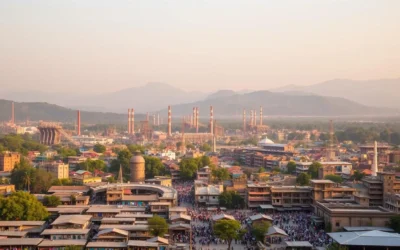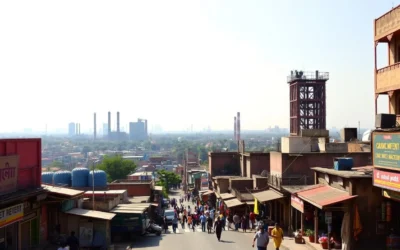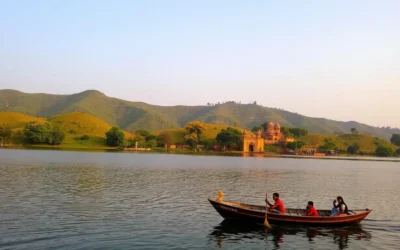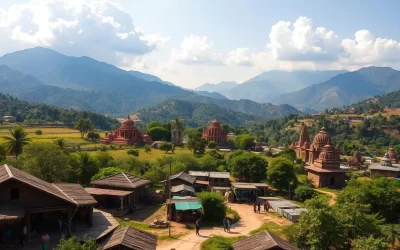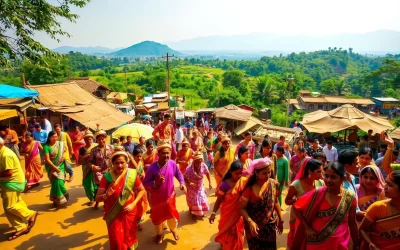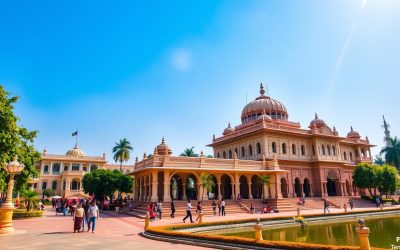✓ Accommodations✓ Flights✓ Rental Cars
You’ll explore the rich cultural landscape of Chhattisgarh, a state in India formed in 2000, where multiple languages coexist.
The Chhattisgarhi language, spoken by approximately 24 million people, is a significant part of this heritage. As an Eastern Hindi language, it’s influenced by Munda and Dravidian languages, making it unique.
This diversity is a result of the state’s history, previously known as Dakshin Kosal. The cultural and political movements since the 1920s have played a crucial role in affirming the language and cultural identity of the region.
As you delve into the official language and other languages spoken in Chhattisgarh, you’ll gain a deeper understanding of its diverse cultural heritage.
The Linguistic Landscape of Chhattisgarh
As you explore Chhattisgarh, you’ll discover a fascinating array of languages and dialects. The state’s linguistic diversity is shaped by its geographic and cultural context.
Geographic and Cultural Context
Chhattisgarh’s diverse geography and cultural heritage have contributed to its rich linguistic landscape. The state is home to various ethnic communities, each with their own language or dialect. 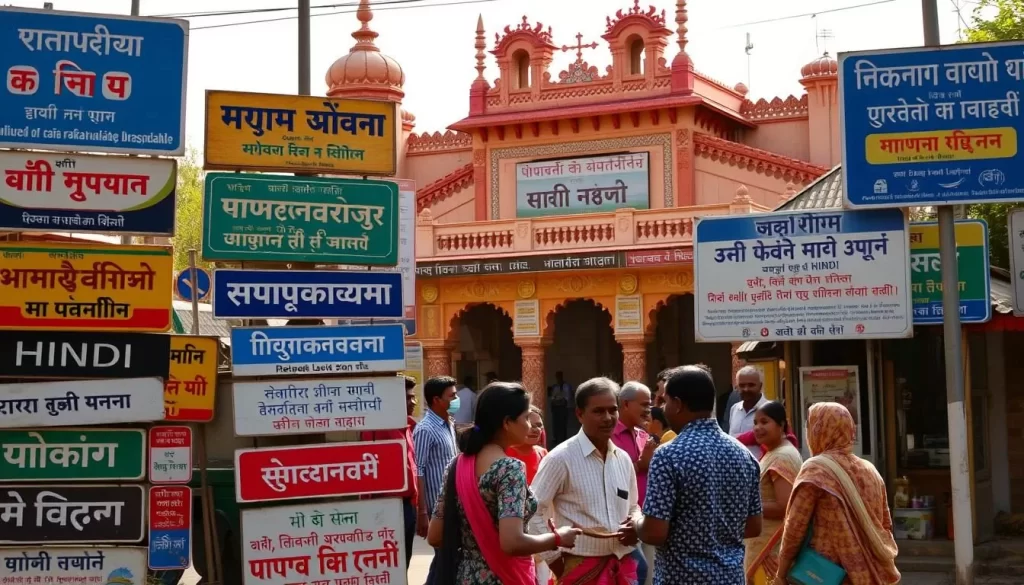
Language Diversity in the Region
The region is characterized by a multitude of dialects and languages, including Chhattisgarhi, which is considered an eastern dialect of Hindi by the Indian Government but is classified as a separate language in Ethnologue. According to the Census India, the state has a significant number of speakers of various Indian languages.
| Dialect | Geographical Division |
|---|---|
| Kedri Chhattisgarhi | Central |
| Utti Chhattisgarhi | Eastern |
| Budati / Khaltahi Chhattisgarhi | Western |
| Bhandar Chhattisgarhi | Northern |
| Rakshahun Chhattisgarhi | Southern |
The use of these languages varies across urban and rural settings, reflecting the state’s complex cultural identity.
Chhattisgarhi: The Official Language of Chhattisgarh, India
The Chhattisgarhi language, officially recognized in Chhattisgarh, India, is a significant part of the region’s cultural fabric. As the official language, it plays a vital role in the state’s administration, literature, and daily communication.
Origins and Classification
Chhattisgarhi belongs to the Eastern Hindi branch of the Indo-Aryan language family. Its origins are closely tied to the historical and cultural developments in the Chhattisgarh region, giving it a unique status among Indian languages.
Main Dialects and Their Distribution
Chhattisgarhi has several dialects, with variations across different districts of Chhattisgarh. The main dialects are influenced by geographical and socio-cultural factors, contributing to the rich linguistic diversity of the region.
Linguistic Features and Script
Chhattisgarhi uses the Devanagari script for writing, similar to Hindi and other Indian languages. Its phonology includes a range of consonants and vowels, with distinctive features like nasalization, making it a unique form of expression.
The phonological features of Chhattisgarhi include a variety of consonants across different categories and a set of vowels that contribute to its distinct sound. Here’s a breakdown of its phonological inventory:
| Category | Consonants |
|---|---|
| Labial | m, p, pʰ, b, bʱ, ʋ |
| Dental/Alveolar | n, t, tʰ, d, dʱ, s, r, l, lʱ |
| Retroflex | ɳ, ʈ, ʈʰ, ɖ, ɖʱ, ɽ, ɽʱ |
Understanding the linguistic features and script of Chhattisgarhi provides insights into its structure and usage, highlighting its importance as the Chhattisgarhi language.
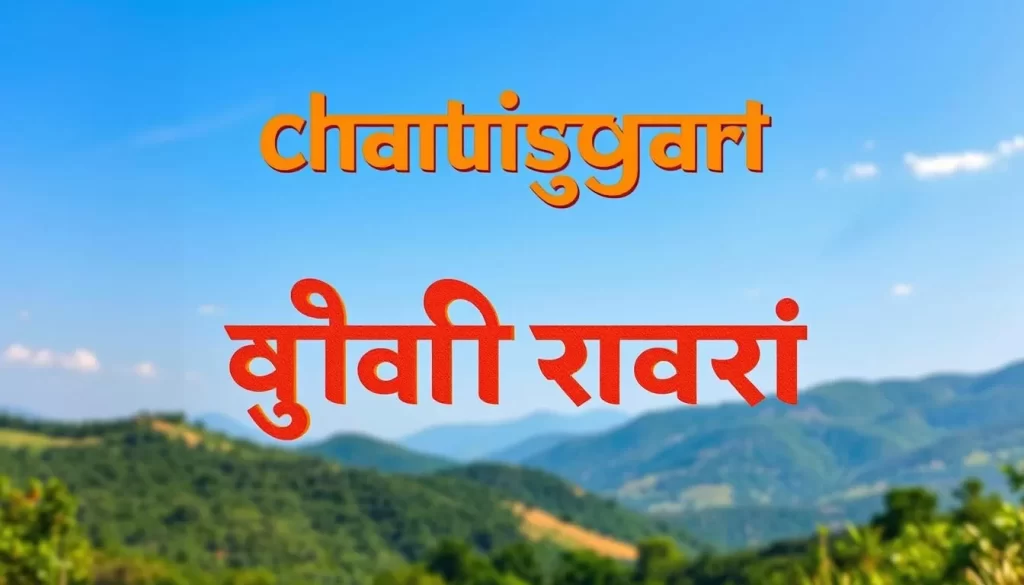
Hindi and Other Languages in Chhattisgarh
As you explore the linguistic landscape of Chhattisgarh, you’ll discover that Hindi and other languages play a significant role in the state. While Chhattisgarhi is the official language, Hindi is widely used, especially in official and administrative contexts.
Status of Hindi in the State
Hindi is widely spoken in Chhattisgarh and serves as a link language, facilitating communication among people from different regions. It is also known as a language used in education, media, and government services. The use of Hindi is prevalent in urban areas and is understood by a significant portion of the population, making it an essential part of the state’s linguistic fabric. With millions of people speaking Hindi, it bridges the gap between local dialects and the broader national language.
Tribal and Minority Languages
Chhattisgarh is home to a rich diversity of tribal and minority languages, including Gondi, Halbi, Bhatri, and Kurukh. These languages belong to different language families, such as Dravidian and Munda, adding to the state’s linguistic diversity. The demographic distribution of these languages varies across regions, with some communities facing challenges in preserving their linguistic traditions. Efforts are being made to document, preserve, and promote these languages through research and cultural activities.
| Language | Language Family | Speakers |
|---|---|---|
| Gondi | Dravidian | 2 million people |
| Halbi | Indo-Aryan | 0.5 million people |
| Bhatri | Indo-Aryan | 0.2 million people |
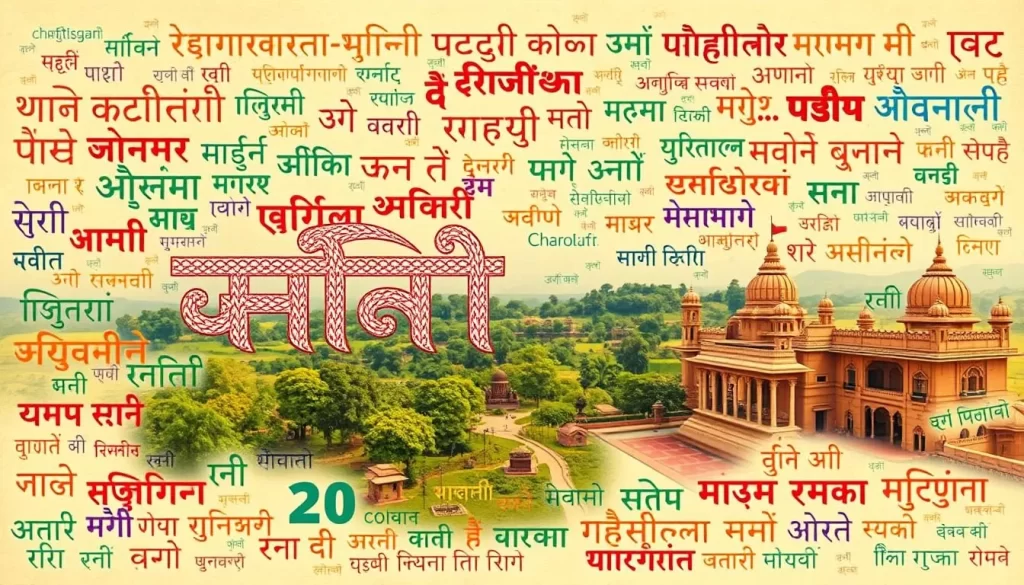
Conclusion
As you’ve explored the linguistic landscape of Chhattisgarh, it’s clear that the state’s language diversity is a vital part of its cultural identity. With approximately 16 million people speaking Chhattisgarhi, the official language, you’ve gained insight into the complex dynamics at play in this Indian state.
The relationship between Chhattisgarhi and Hindi language is multifaceted, with debates surrounding classification and practical implications for language policy. This overview highlights the importance of continued research and documentation of Chhattisgarh’s languages and dialects, especially those that may be at risk of decline.
The above is subject to change.
Check back often to TRAVEL.COM for the latest travel tips and deals.

